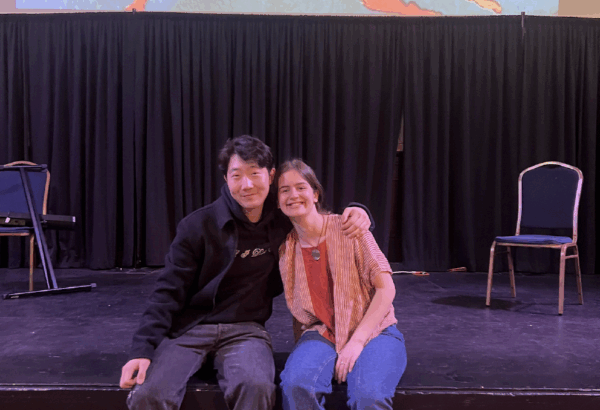The thinking activity—according to Plato, the soundless dialogue we carry on with ourselves—serves only to open the eyes of the mind…for seeing and beholding truth. In other words, thinking aims at and ends in contemplation…
~Hannah Arendt,[1]
It is fascinating to consider the act of “thinking” as a dialogue. In framing thinking as an internal dialogue, you become a conversation partner with yourself, hopefully a friend but perhaps as a critic. Once our awareness is shifted to understand thinking as a conversation with ourselves, the aim moves towards deeper thought and even contemplation.
Solitude Reinforcing Wellbeing
How do you talk to yourself? How do you listen? Do you speak to yourself the way you would speak to a friend? Our attitudes towards ourselves, the way that we think and speak, can be cultivated through practice. What Arendt calls thinking, Vivek Murthy calls solitude.
In his book, Together: The Healing Power of Human Connection in a Somewhat Lonely World (2020) Murthy says “Solitude…is a state of peaceful aloneness or voluntary isolation. It is an opportunity for self-reflection and a chance to connect with ourselves without distraction or disturbance. It enhances our personal growth, creativity and emotional wellbeing, allowing us to reflect, restore and replenish… Solitude, paradoxically, protects against loneliness.” [2]
It may seem curious that being by yourself could build up immunity against loneliness, but Murthy describes solitude as “connecting with ourselves” which leads to growth. The caveat is that it must be “without distraction or disturbance.” A persistent residual effect of the pandemic may just be habits of distraction. Many of my students this past semester discussed how they got really good at multi-tasking when classes were remote. It was normal (and heroic!) during the early part of the pandemic to be taking (or teaching) a class while simultaneously helping younger children in your household get a glass of water or do an exercise class in your living room or cook lunch on the stove. What was useful during that moment, might impede our ability to be able to focus on an inner life now. This desire to be in solitude can be influenced by our many devices and demands on our time.
Inner Landscapes
In a recent panel discussion around Empathy and Compassion at the Wellbeing Summit for Social Change, Parker Palmer shared that when he feels strong emotions on issues he has embraced a new discipline rooted in the “realization that I have an inner landscape. I make choices in that inner landscape around where I stand: in my anger or in my hope.”
What a fascinating concept to see your inner life not just as a dialogue but as a landscape upon which you can situate yourself. A place you can choose to nurture different feelings such as anger or hope based on where you choose to position yourself in that landscape.
In both metaphors, dialogue and landscape, the senses are involved. In dialogue you hear yourself, in landscape you see yourself, both are skills that cultivate a sense of inner strength, of self-compassion, of solitude and wellbeing.
Engaging the Inner Work of Dialogue
Every summer it is a good challenge to find an opportunity to take a vacation from our work in order to restore and replenish. This summer the need to do so may be greater than ever. Arendt’s concept of self-dialogue, Murthy’s of solitude and Palmer’s inner landscapes provide daily invitations for micro-vacations from the daily grind. Taking a walk during lunch or sitting outside or choosing to journal all can be moments to cultivate the inner life, to listen in to how you may be feeling and to nurture a friendship with yourself.



